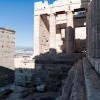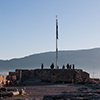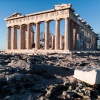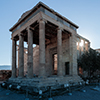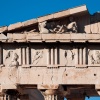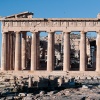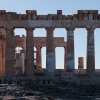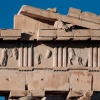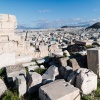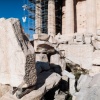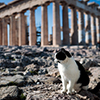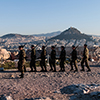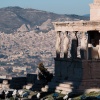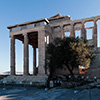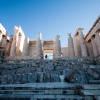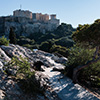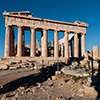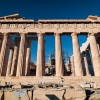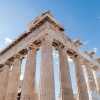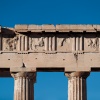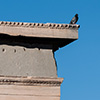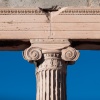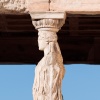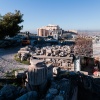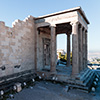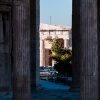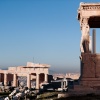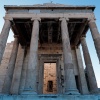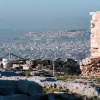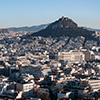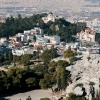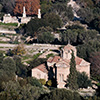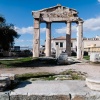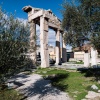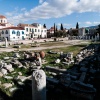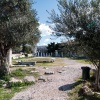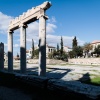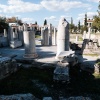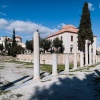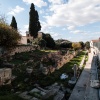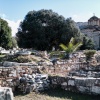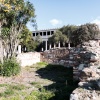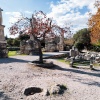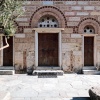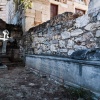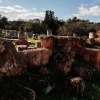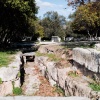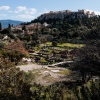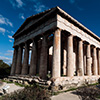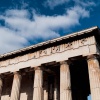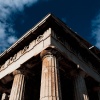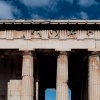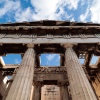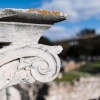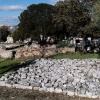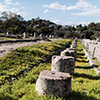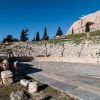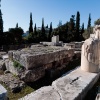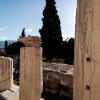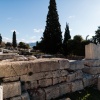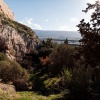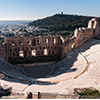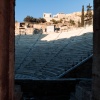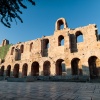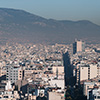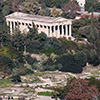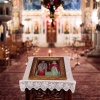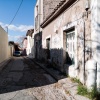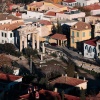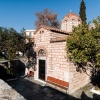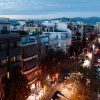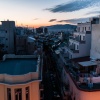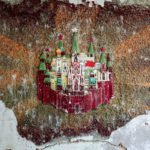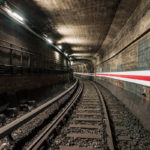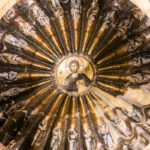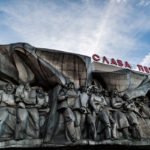Athens, Acropolis and Roman Ruins
The area of greater Athens is inhabited by humans for about 7.500 years. Symbol of this presence and its cultures is the Acropolis Hill, the famous and conspicuous castle hill with its Parthenon temple. The rock as well its development are evidence of some of the world’s greatest civilsations, of the Greeks, Romans, Venetians and Ottomans as well as the ever boiling conflict discord about the Mediterranean Sea. Even today the temple’s imagery stands for a Europe full of contrasts.
Here begins Europe!
“Here begins Europe!” boasts from the entrance of Athens Acropolis. It also aims on the form of sovereignty being called democracy and that has to face quite some criticism these days. Real power of the people is rarely seen these days, if not to say not existing.
Times of manipulated unemployment statistics and hypocritical governmental heads reveal the ugly grimace of an industrialised generation of politicians; an industry whose dependents get funded by political power and its retention at all costs. The birth of the world’s Orbans, Brexits and Trumps is inherent to such structures.
It is early in the morning. The winter sun barely makes it to send its first rays over the hills surrounding Athens. The soldiers hoisting the colours of Greece every morning anew in Acropolis Hill are wrapped in warm clothes. One of those guards smiles when noticing me being delighted by phat drum’n bass rhythms while enjoying the morning sun illuminating the Erechtheion.
The marble path up to Acropolis is slippery and only few people walk up. The big mass of tourists will arrive at around 10 o’clock in the morning, when the experience of magical wintery sidelight plus pristine air isn’t that intensive anymore.
Actually I flew to Athens to continue my European subway photography project, but it smashed to pieces exactly there where “Here begins Europe” hails from the walls of Acropolis. Unfortunately the coarse security staff of Attiko Metro is everything but open-minded when it comes to subway photos. Allegedly because photos support graffiti.
However. In the end I compensated that “loss” with a detailed photo series showing the Acropolis without people and without those bloodily annoying and narcissistic selfie idiots who’ve got nothing better to do than wasting their lifetime with thousands of Facebook duck face photos; who’ve got nothing better to do than producing data rubbish in the shadow of one of humanity’s biggest cultural assets.
Once Acropolis was a bit more than a collection of column stubs. Basically it was the Venetians who the destroyed the temples when their shelling hit a hidden ammunition depot of the Ottomans. Back then Parthenon went off like a rocket…, as we Berliners would say.
The explosion left a worst-case puzzle of microscopic size behind. Since the 1970’s the Greeks try to put back together again what belongs together. A millimetre work even Sisyphus would be concerned of… The omnipresent cranes and scaffoldings are a sign of that.
At the feet of Acropolis – the upward path leads inevitably along it – visitors can witness the remnants of Theatre of Dionysus, being most important stage of ancient Greece and a cradle of mankind when it comes to culture as here the classic drama wasn’t only invented but also lived. The famous classic tragedies of Aeschylus, Sophocles and Euripides once saw the light of day at events being called Dionysia. To the west you can find another theatre, the mighty and well preserved Odeon of Herodes Atticus.
Being located in the shadow of the castle rock, where rock-size portions of Gyros and Tzatziki get served, two major Roman sites can be explored. Those so called Agoras (former open market and places to gather) tell the story of ancient times when the Roman Empire meant to exist forever but in the end had a mediocre finish.
I would have loved to capture the Athens Metro as along its historic line 1 the same tiles from the Velten factory near Berlin hail from the walls like they were used here in Berlin as well. Maybe one day the Athenians don’t allege only bad things and let my photo series happen. Let’s see.

